Jake Mohlmann on his and Evan Obercian's just-completed tour, Texas: The Rio Grande Valley
We just wrapped up an exciting week in south Texas encountering 196 species of birds while covering over 1,147 miles of pavement, dirt, rivers, lakes, and border wall. At the east end of the lower valley, South Padre Island sits as a barrier between the ocean and mainland. Whimbrels, Marbled Godwits, Long-billed Curlews, and Willets all foraged while Reddish Egrets, Little Blue and Tricolored Herons all stood in wait.
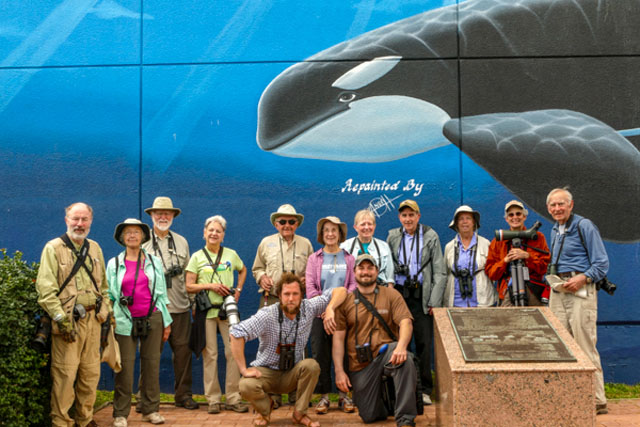
Our group excited to see what South Padre Island has in store.
Further up valley several famous birding destinations were explored including Santa Ana and Laguna Atascosa National Wildlife Refuges, and both Estero Llano Grande and Bentsen State Parks. Here we were met by a bevy of Lower Rio Grande specialties including raucous Plain Chachalacas, vibrant Green Jays, and hooting White-tipped Doves. At Estero we managed to eventually find a very rare and exciting bird when we received word it was being seen at the moment we arrived. A male Rose-throated Becard flew in above our heads and sallied for insects as we stood in awe watching this vagrant in the morning mist. While leaving this park one day a keen-eyed observer spotted a Green Kingfisher sitting above its swampy domain staring intently for unsuspecting fish. This was one of three species of kingfisher seen well this week.
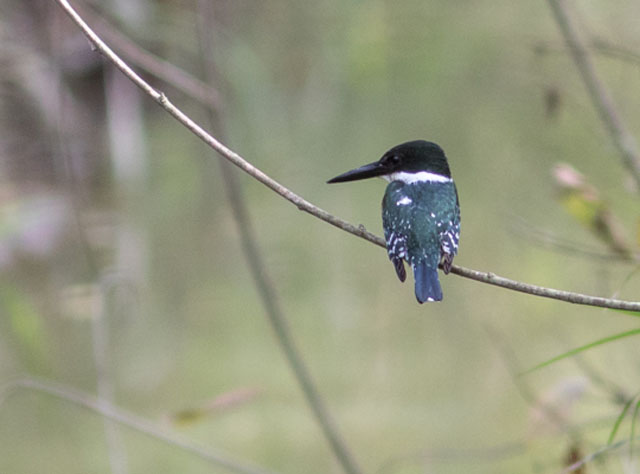
A Green Kingfisher sits silently over a forested stream.
The western edge of the valley turns into the eastern edge of the Chihuahuan Desert with species reminiscent of areas further afield like intricately patterned Cactus Wrens, active Black-tailed Gnatcatchers, and speedy Greater Roadrunners. Standing on the banks of the mighty Rio Bravo here is always exciting. A seemingly endless supply of birds fly up and down the river including some early Red-billed Pigeons seen two days. Osprey, Gray Hawk, and Zone-tailed Hawks all flew by overhead and smaller denizens like miniscule White-collared Seedeater, bold Verdins, and tail-bobbing Black Phoebes worked the edges. A certain feeder setup here won for best of the trip as we watched several Altamira Orioles sharing their space with at least 3 Audubon’s Orioles, all coming in to orange slices.
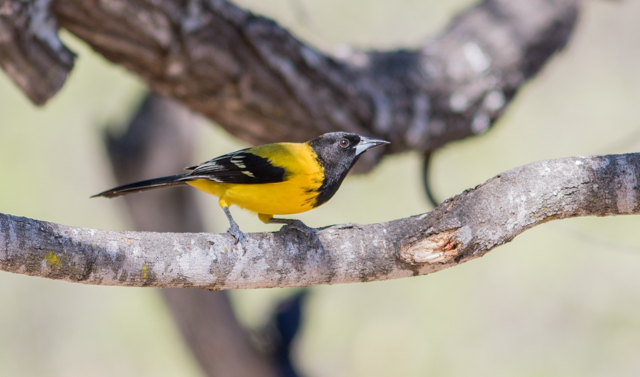
Audubon’s Orioles were seen extremely well.
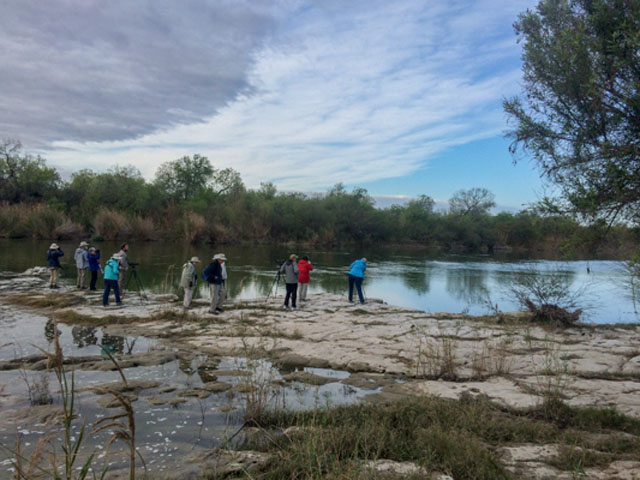
Standing in the Rio Grande on rocks is a great way to see raptors.
Our extension to Corpus Christi was a huge success. Our boat trip through Aransas National Wildlife Refuge produced at least 14 endangered Whooping Cranes, some extremely close. These colossal predators spend the winter here devouring as many blue crabs as they can before heading to the far north to breed.
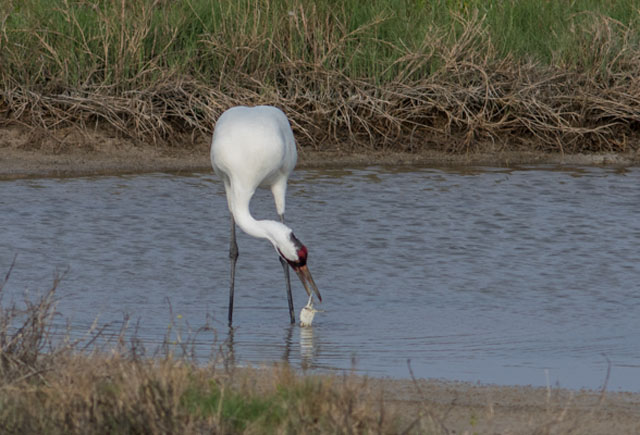
A Blue Crab hangs on for dear life as a Whooping Crane meets its match.
Nearby a rare-for-Texas Broad-billed Hummingbird was a complete surprise as we watched it coming repeatedly to a stake-out feeder. This immature male was stunningly beautiful and voted best bird for some of the participants. A bit further inland the group had the good fortune of coming across our fourth owl species of the trip when a Barred Owl was spotted in a huge oak tree. Much to our surprise there were 2 of these hooting wonders and we got to experience them duet in the last rays of sunshine for the day. What a trip!
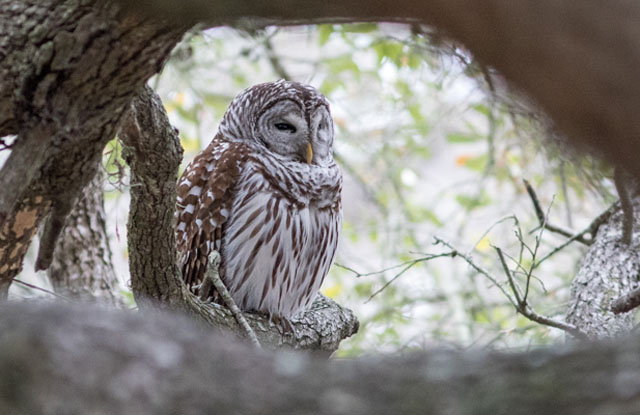
A Barred Owl sits motionless awaiting nightfall.
